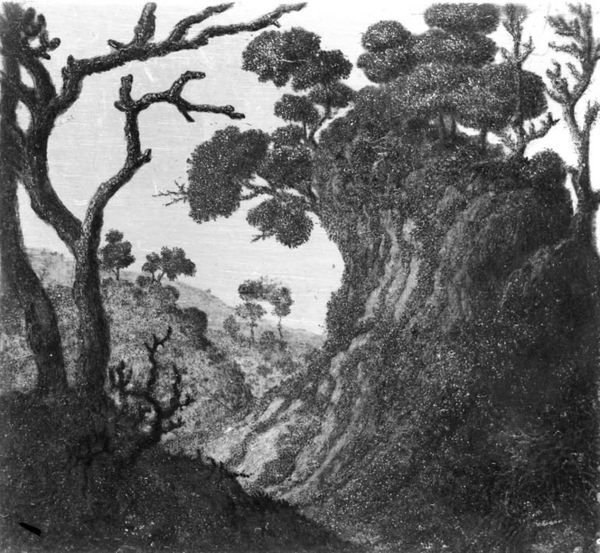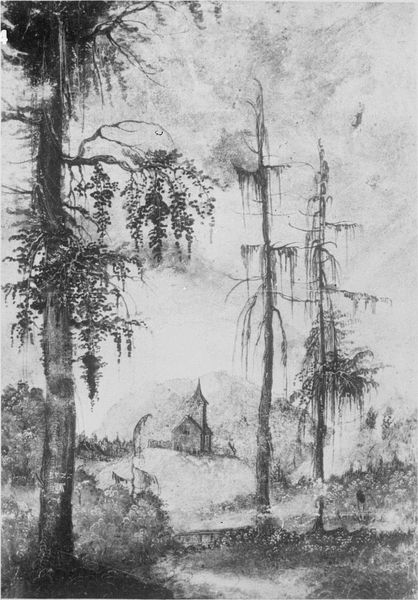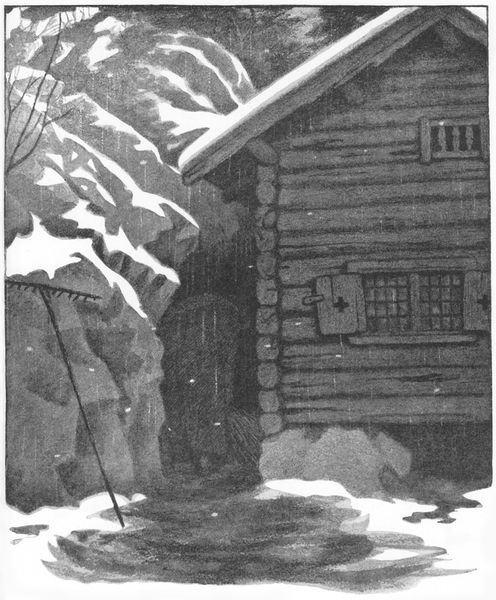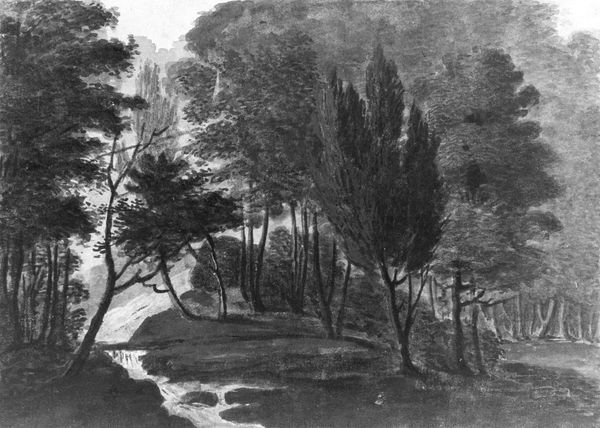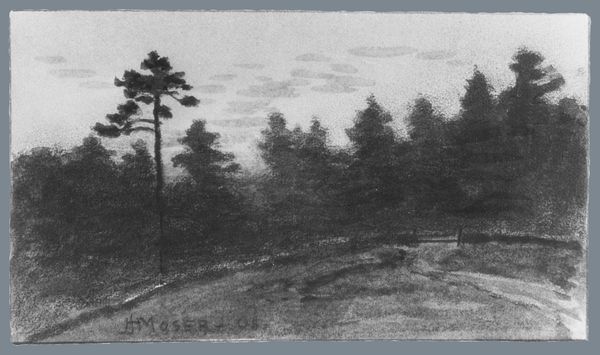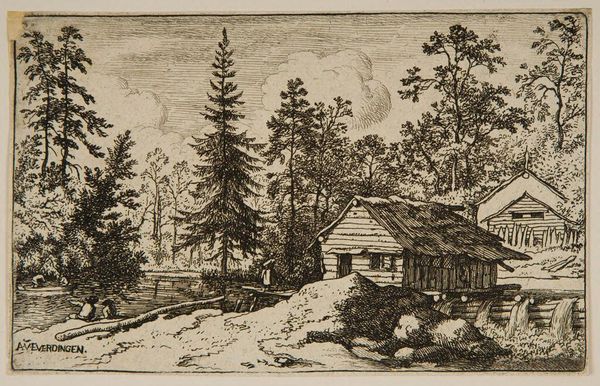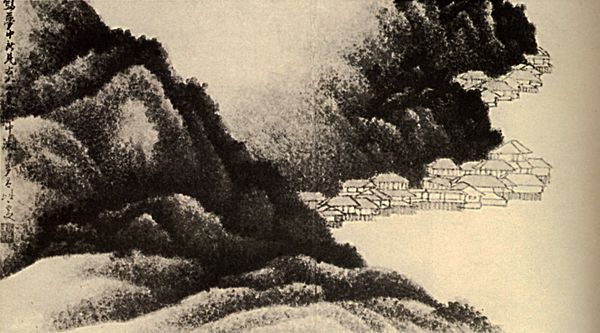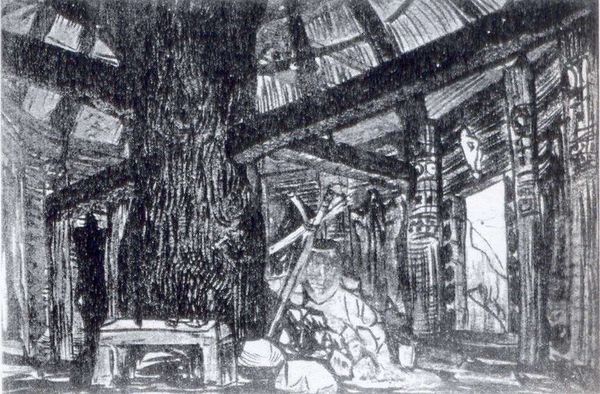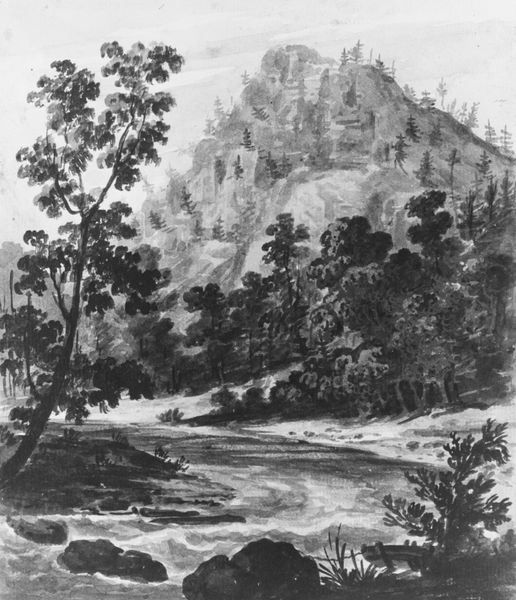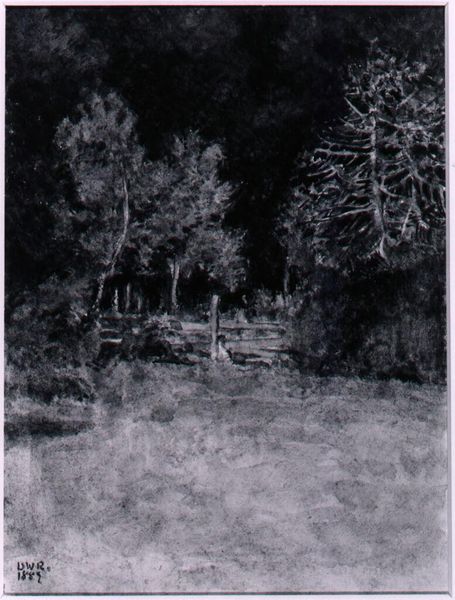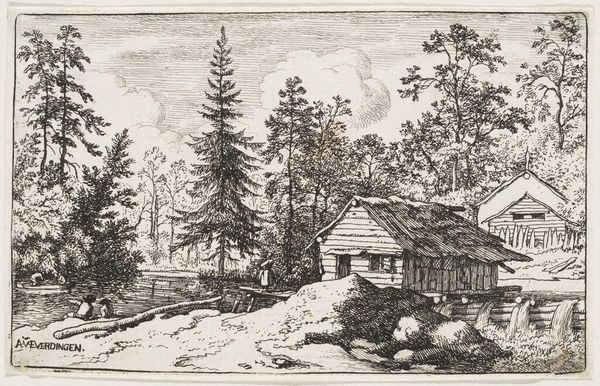
Copyright: Public domain
Editor: This is Nicholas Roerich's "Hut in the Forest," a drawing from 1912 executed in charcoal and pencil. I'm struck by how the rough textures of the forest contrast with the clean, angular lines of the hut. What's your take on this piece? Curator: Roerich’s choice of charcoal and pencil for a subject like this is intriguing. It highlights the materials used in both the creation of the art and the construction of the hut itself. Look at how he uses the charcoal to mimic the rough-hewn logs of the cabin, almost equating the labor of the artist with the labor of the builder. Do you see that relationship too? Editor: I do now that you point it out! So the very act of drawing, the labor involved, is significant. Curator: Precisely. Consider the social context. Early 20th century Russia was grappling with industrialization. Roerich, steeped in the art world, deliberately chooses humble materials and a rural scene, perhaps commenting on the value of traditional ways of life in the face of encroaching modernity. What do you think that says about consumption then versus now? Editor: That’s fascinating. I hadn't considered that the drawing's materiality itself carries a social commentary about production, contrasting handcrafted structures with factory outputs. Curator: Exactly! The "Hut in the Forest" isn't just a pretty landscape. It's a statement about materials, labor, and the social values attached to them. Editor: This makes me see beyond the surface! Curator: I am glad. Roerich's labor-centric choice in art is now more defined for us.
Comments
No comments
Be the first to comment and join the conversation on the ultimate creative platform.

